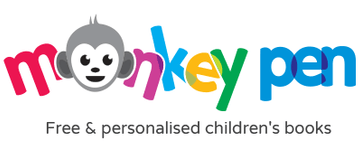Color Theory for Kids: Teaching the Basics Through Coloring
Nov 20, 2025
Coloring is not just a fun past activity for kids; it is one of the basic steps in art education and picture-based learning. By offering a box of crayons to a child, we open up a whole new world of self-expression, imagination, and understanding. With coloring, children learn how colors interact with each other and how they can be mixed and changed, and they also find the relevance of these lessons to their emotional and perceptual development.
This is where color theory becomes a key concept of early education for children. Grasping color theory supports children thinking outside of the easy act of filling in shapes. It provides them tools to choose options, show feelings, and make art with purpose. Let us see how coloring pages can support kids learning the basics of art education.
1. What Is Color Theory, and Why Is It Important for Kids?
The way colors mix up to produce something, blend, pair, and offset to create various effects is explained by color theory. While structured lessons may support adults learning this, kids can be introduced to color theory in interactive and tactile ways.
Color theory, in its most simple form, supports the recognition of three key color categories:
- Primary colours include red, blue, and yellow.
- Secondary colors: orange, green, and purple, created by combining the primary colors.
- Tertiary colors: the colors that show up when children practice even more, such as blue-green or red-orange.
When children understand these fundamentals, they start to notice patterns and bonds in the world surrounding them, like a blue sea, a green mountain, and a red butterfly. This improves not only artistic sense but also cognitive insight into how colors communicate.
Color theory also encourages children to share their thoughts. Vibrant colors might indicate joy, while deep hues can suggest quiet or sorrow. When educating kids about colors, relating colors to emotions offers them a new word meaning for how they perceive.
2. Turning Coloring into a Learning Experience
Most children begin coloring as a hobby or entertainment. But with a little guidance, it becomes a morning art class. By just offering a wide range of supplies, like colored pencils, crayons, pastel colors, and paints. With these, we can make coloring a practical art education experience.
Help kids to understand how colors act. What occurs when they press gently versus coloring boldly? How do two different colors placed side by side feel? When children start to experiment with colors, they automatically start using art education basics, like harmony, balance, and contrast, without even recognizing it.
A useful guide is to allow kids to blend colors openly. Offer them an empty sheet or a color palette for mixing. This ignites creativity and curiosity. They might explore, for instance, that blue and yellow create green, or filling white makes a color light. Each exploration boosts their knowledge of color theory through action.
3. Teaching Color Relationships Through Coloring Pages
Coloring pages can turn into mini lessons about color theory for children. Pick or create pages that concentrate on themes such as seasons, feelings, or nature. For instance:
- A garden picture can help kids learn contrasting hues, like red flowers alongside green leaves.
- A sunset scene can discover bright and calm hues. Explore warm versus cool colors.
- A winter sheet can concentrate on soft and deep tones, on how blue changes into light winter hues or dark blue skies.
When children plan which colors to use, they are trying visual imagination. You can ask simple leading questions:
- What colors work well together?
- How does this color make you feel?
- Can you create a fresh color from two other colors?
These queries make the activity a discussion about visual learning. Children begin to recognize color as both art and science, something to discover, guess, and communicate.
4. Encouraging Experimentation and Confidence
The greatest way to teach color theory for kids is to allow them to experiment openly. Stop making corrections. Instead, embrace creative thoughts. When a child colors a leaf turquoise or a sky pink, they are trying out ideas and understanding cause and effect.
Give a protected place for them to share what they imagine. Tell about advanced methods slowly, such as shading, blending, or creating gradient effects, to sustain their interest and encourage a sense of pride for their growth.
This type of discovery improves confidence. When kids understand how to use each art tool effectively, from colored pencils to brushes, they become more talented and self-reliant. Gradually, coloring becomes more than just finishing shapes; it turns into an art activity where children imagine, choose, and design like illustrators.
5. Connecting Color Theory with Emotions
Color is not just what you see; it is an emotion. Kids often react to colors before they can tell the reason. A red heart feels warm, a blue sea feels serene, and a grey cloud feels calm.
When reinforcing colors to kids, help them relate colors with feelings and moods. You might inquire:
- What color makes you happy?
- Which color makes you calm?
- What colors make you feel excited or energetic?
This develops emotional awareness beside coloring skills. Children begin to use color to interact, a main objective in art education basics. When they grow, they will use these concepts normally in painting, drawing, and even storytelling.
6. Making Color Theory Fun and Hands-On
Learning about color shouldn’t feel like a serious activity; it should feel like a fun act. Practice easy tasks to strengthen color theory for children:
- Color mixing jars: Mix paint and water to see new colors generate.
- Color scavenger hunt: Encourage kids to identify everyday examples of warm or cool colors around the space or outer surroundings.
- Emotion coloring: Assign colors to feelings, such as red for love, blue for calm, and yellow for joy, and have children color pictures that match the feelings.
- Art challenges: Ask them to use only two or three colors to finish a picture; this fosters creativity within boundaries.
These activities turn teaching colors to kids interactive and meaningful, making simple play a memorable learning experience.
7. Establishing the Foundation for Art Education
Early exposure to color theory concepts facilitates children's procurement of art basics. fundamentals of art. They start to notice how shape, color, and line connect to each other, the basic elements of art education that improve more powerful coloring abilities later.
This learning will be carried with children as they transition from coloring books to drawing and painting on their own when they grow. The knowledge gained from selecting crayons or blending colors serves as a foundation for the development of creativity and an appreciation for art.
In addition to this, color theory helps other aspects of learning, such as focus, observation, and fine motor control. It even demonstrates early exploration of science, estimating results, experimenting with ideas, and creating conclusions.
8. Nurturing Creativity Beyond the Page
The aim of teaching colors to kids is not precision; it’s discovery. When children learn color theory, they become confident to practice new ideas and make design choices.
Motivate them to notice art everywhere: in the colors of a tree, the shades of the sky, or the patterns in dresses and playful toys. Each notice enriches their visual education and imaginative thinking.
With proper guidance, coloring becomes a site of growth, wherein children not only understand about colors but also about themselves.
Conclusion: Turning Color Theory into Joyful Learning
By teaching color theory to children through easy coloring projects, we turn a common hobby into a broad learning process. Children begin learning how colors function, what they represent, and most importantly, how they can employ them creatively.
Through art education basics and fun discovery, we can foster not just little creators but nurture not just little artists but inquisitive explorers who observe the world in beauty, color, and balance. When we guide kids to try out and examine and teach kids to experiment, observe, and delight in the activity, coloring turns into more than art; it becomes a fun expedition of exploration.
Help children practice color theory with Monkey Pen’s free coloring pages collection and printable coloring books library by downloading the printables from the website. Also, kids can apply their color theory learning on free color-by-number activity worksheets and dot-to-dot printable collections.


